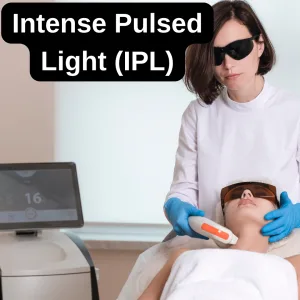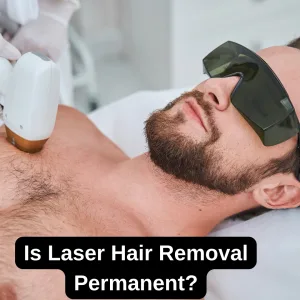Laser hair removal is a highly effective and long-lasting solution for reducing unwanted hair. However, many people wonder how long they should wait before exposing treated areas to sunlight. Protecting your skin from UV rays after a laser session is essential to prevent pigmentation, irritation, and potential skin damage.
In this guide, we’ll explore:
- How long after laser hair removal you can safely enjoy the sun
- The risks of sun exposure
- The best aftercare practices to maintain optimal results
Why Should You Avoid Sun Exposure After Laser Hair Removal?
After laser hair removal, your skin becomes extremely sensitive to UV rays and external factors. The laser targets melanin (pigment) in the hair follicles, generating heat that damages the follicle and inhibits hair growth. However, this process also affects the surrounding skin, making it more vulnerable to UV-induced damage.
Exposing treated skin to sunlight too soon can lead to various complications, such as:
1. Hyperpigmentation and Dark Spots
Post-inflammatory hyperpigmentation (PIH) occurs when the skin produces excess melanin after exposure to UV rays. This condition may take weeks or months to fade and, in severe cases, can become permanent.
2. Sunburn and Increased Skin Sensitivity
Laser-treated skin remains sensitive for 7 to 14 days after a session. Direct sun exposure during this period can cause sunburn, redness, and discomfort, making the skin prone to blistering and peeling. Tanning, whether from natural sunlight or tanning beds, should be strictly avoided after laser hair removal. Brazilian Laser Hair Removal
3. Blisters and Skin Damage
Premature sun exposure may result in blisters, particularly on sensitive areas such as the face, bikini line, and underarms. For these delicate areas, avoid sun exposure for at least 2 weeks, but ideally 4 weeks to minimize blister risk. The duration of sun avoidance may vary depending on the following factors: How Long Does Laser Hair Removal Last?
4. Prolonged Healing and Poor Results
Sun exposure interferes with the natural healing process, leading to delayed results, uneven hair reduction, and increased hair regrowth in some cases.
Exposing treated skin to sunlight too soon can lead to various complications, such as: Laser Hair Removal Side Effects
How Long Should You Avoid the Sun After Laser Hair Removal?
Avoid direct sun exposure for at least 2 weeks, but for optimal results and to prevent pigmentation or skin damage, avoid prolonged sun exposure and tanning for 4 weeks after laser hair removal.
Factors That Affect Healing Time
The duration of sun avoidance may vary depending on the following factors:
Skin Type: Fair skin (Fitzpatrick Types I-II) is prone to sunburn and hyperpigmentation, requiring at least 14 days of sun avoidance, ideally 4 weeks for best results. Medium skin (Types III-IV) should avoid sun exposure for 10 to 14 days and consistently use sunscreen for 4 weeks. Darker skin (Types V-VI) may need only 7 to 10 days of sun avoidance but should maintain sun protection for 4 weeks to minimize pigmentation risk.
Treated Area: Sensitive areas like the face, neck, and bikini line require extra protection, while thicker skin on the legs and arms may recover faster.
Type of Laser Used:
Alexandrite Laser: Requires at least 2 weeks of sun avoidance due to its intensity, but ideally 4 weeks for best results.
Diode Laser: A safer option for darker skin tones, but sun avoidance should be maintained for at least 2 weeks.
Nd:YAG Laser: Suitable for all skin types but still requires a minimum of 2 weeks of sun protection to prevent complications.
Sunscreen Guidelines After Laser Hair Removal
Using sunscreen after laser hair removal is essential to protect sensitive skin and prevent complications. Choose a broad-spectrum sunscreen with SPF 50 or higher and apply it generously to the treated area.
Sunscreen Application Tips
- Apply 30 Minutes Before Sun Exposure: Allow enough time for the sunscreen to absorb.
- Reapply Every 2 Hours: Reapply sunscreen every 2 hours during regular sun exposure. However, if you are swimming, sweating, or towel drying, reapply sunscreen within 40 to 80 minutes to ensure continuous protection.
- Use Mineral-Based Sunscreen: Sunscreens with zinc oxide or titanium dioxide are ideal for sensitive skin and offer a physical barrier against harmful UV rays.
Sunscreens with zinc oxide or titanium dioxide are ideal for sensitive skin and offer a physical barrier against harmful UV rays. When to Exfoliate After Laser Hair Removal
Why You Should Avoid Tanning After Laser Hair Removal
Tanning, whether from natural sunlight or tanning beds, should be strictly avoided after laser hair removal. Exposure to UV rays increases the risk of burns, hyperpigmentation, and poor treatment results.
Dangers of Tanning After Laser Treatment
- Higher Risk of Burns: The treated area remains sensitive for several weeks, making it more prone to sunburn.
- Increased Hyperpigmentation: Tanning can cause dark patches and uneven skin tone, reversing the progress of your laser treatment. Prolonged tanning exposure can lead to permanent pigmentation changes and may increase the risk of skin damage, making the results of laser hair removal less effective.
- Reduced Treatment Effectiveness: Tanned skin absorbs more heat, which can interfere with the laser’s ability to target hair follicles accurately.
For best results, avoid tanning for at least 4 weeks after laser hair removal to prevent pigmentation, burns, and poor treatment results.
Pre-Treatment Sun Protection Measures
After laser hair removal, avoid direct sun exposure for at least 2 weeks, but ideally 4 weeks to prevent pigmentation and allow the skin to heal properly.. Sun-tanned or sunburned skin increases the risk of burns, irritation, and hyperpigmentation.
Guidelines to Protect Your Skin Before Treatment
- Avoid Tanning Beds and Self-Tanners:
Tanning increases melanin production, which can interfere with laser effectiveness. Refrain from using tanning products for at least 2 weeks before your session. - Use Broad-Spectrum Sunscreen:
If avoiding the sun is unavoidable, apply a broad-spectrum sunscreen with SPF 50+ - Cover the Treated Area with Protective Clothing:
Wear loose, breathable fabrics and wide-brimmed hats to minimize sun exposure before your treatment.
Post-Laser Sun Protection Measures
After laser hair removal, your skin needs extra protection to prevent damage and maintain smooth, even results. Follow these post-treatment measures for maximum protection.
Key Guidelines for Safe Sun Exposure
- Use Broad-Spectrum Sunscreen Daily:
Apply a broad-spectrum sunscreen with SPF 50 or higher to the treated area, even if you’re not planning to spend much time outdoors. - Wear Protective Clothing:
Loose, lightweight fabrics, wide-brimmed hats, and sunglasses provide added protection from UV rays. - Limit Sun Exposure During Peak Hours:
Avoid direct sun exposure between 10 a.m. and 4 p.m., when UV rays are strongest. Seek shade whenever possible during these peak hours.
How to Treat Sunburn After Laser Hair Removal
If you accidentally get sunburned after laser hair removal, take immediate action to reduce discomfort and minimize skin damage.
Steps to Soothe Sunburned Skin
- Apply Aloe Vera Gel: Aloe vera has soothing and anti-inflammatory properties that help cool irritated skin.
- Use Cold Compresses: Apply a cold, damp cloth to the affected area to reduce redness and swelling.
- Stay Hydrated: Drink plenty of water to maintain skin hydration and support the healing process.
Apply Aloe Vera Gel: Aloe vera has soothing and anti-inflammatory properties that help cool irritated skin. Rose Water Benefits
Key Factors to Consider When Choosing Sunscreen After Laser Hair Removal
Not all sunscreens provide the same level of protection and safety, especially for post-laser skin. When selecting sunscreen after laser hair removal, consider these factors:
1. Choose a Broad-Spectrum Sunscreen
Broad-spectrum sunscreens protect against both UVA and UVB rays:
- UVA Rays: Cause premature aging, fine lines, and hyperpigmentation.
- UVB Rays: Lead to sunburn and increase the risk of skin damage.
A broad-spectrum sunscreen ensures that your treated skin is protected from both types of harmful radiation. Look for labels that clearly mention “broad-spectrum protection” and ensure the sunscreen provides both UVA and UVB protection with a minimum SPF of 50 for post-laser skin.
2. Opt for SPF 50 or Higher
Sunscreen’s Sun Protection Factor (SPF) indicates how effectively it blocks UVB rays.
SPF 30: Provides adequate protection by blocking approximately 97% of UVB rays.
SPF 50: Offers stronger protection, blocking about 98% of UVB rays and minimizing the risk of post-laser pigmentation and sun damage. For post-laser skin, dermatologists recommend using a minimum SPF of 50. If you’re spending prolonged time outdoors, opt for SPF 50+ for maximum protection.
3. Choose a Mineral-Based Sunscreen
Mineral (physical) sunscreens create a protective barrier on the skin by reflecting UV rays. These sunscreens contain zinc oxide or titanium dioxide, which are gentler on sensitive skin.
Why mineral sunscreens are ideal after laser hair removal:
- Non-irritating and less likely to cause redness or breakouts.
- Effective immediately after application (unlike chemical sunscreens that take 20 minutes to activate).
- Provides a physical barrier that shields the skin without penetrating deeper layers.
4. Opt for Non-Comedogenic and Fragrance-Free Formulas
Post-laser skin is prone to irritation and clogged pores. Non-comedogenic sunscreens are designed not to block pores, making them ideal for acne-prone or sensitive skin.
Additionally, fragrance-free formulas reduce the risk of irritation and allergic reactions. Avoid sunscreens with alcohol, parabens, and synthetic fragrances, which can further irritate treated skin.
5. Water-Resistant Sunscreens for Prolonged Protection
If you plan to spend extended time outdoors or engage in physical activities, choose a water-resistant sunscreen. These formulations adhere better to the skin and provide continuous protection, even after sweating or swimming.
However, remember that no sunscreen is 100% waterproof. Choose a mineral-based sunscreen with zinc oxide or titanium dioxide, which are gentler on sensitive skin. What Does Full Body Laser Hair Removal Include?
Best Types of Sunscreens to Use After Laser Hair Removal
To maximize protection and promote healthy skin healing after laser treatment, select sunscreens that align with your skin type. Here’s a guide:
| Sunscreen Type | Best For | Key Benefits |
| Mineral Sunscreen | Sensitive Skin | Provides a protective physical barrier |
| Broad-Spectrum SPF | All Skin Types | Protects against UVA and UVB rays |
| Non-Comedogenic SPF | Oily/Acne-Prone Skin | Prevents clogged pores and breakouts |
| Tinted Sunscreen | Hyperpigmentation-Prone Skin | Offers slight coverage and blends seamlessly |
Sunscreen Recommendations for Different Skin Types
Finding the right sunscreen that suits your skin type ensures enhanced protection and prevents irritation. Below are the best sunscreen options categorized by skin type:
1. For Sensitive Skin
Choose a mineral-based sunscreen with zinc oxide or titanium dioxide. Avoid alcohol, parabens, and harsh chemicals.
Recommended Product:
EltaMD UV Physical Broad-Spectrum
2. For Oily or Acne-Prone Skin
Opt for a non-comedogenic, oil-free sunscreen to prevent clogged pores and breakouts.
Recommended Product:
- Neutrogena Clear Face Liquid Lotion SPF 55
- EltaMD UV Clear
3. For Dry Skin
Use a hydrating sunscreen with added moisturizing agents like hyaluronic acid or glycerin.
Recommended Product:
- CeraVe Hydrating Sunscreen SPF 50
- Aveeno Protect + Hydrate Lotion SPF 50
4. For Hyperpigmentation-Prone Skin
A tinted sunscreen can help protect the skin while reducing discoloration.
Recommended Product:
- ISDIN Eryfotona Actinica SPF 50+
- Colorescience Sunforgettable Total Protection SPF 50
Common Mistakes to Avoid When Using Sunscreen After Laser Hair Removal
Even with the right sunscreen, making common application mistakes can reduce its effectiveness. Avoid these mistakes to ensure maximum protection:
1. Skipping Sunscreen on Cloudy Days
Up to 80% of UV rays can penetrate clouds. Always wear sunscreen, even on overcast days.
2. Applying Too Little Sunscreen
Use a nickel-sized amount for the face and about 1 ounce (a shot glass) for the body. Apply liberally for complete coverage.
3. Not Reapplying Sunscreen
Sunscreen effectiveness diminishes over time, especially after sweating or swimming.
4. Using Expired Sunscreen
Expired sunscreen loses its efficacy. Check the expiration date and replace outdated products.
What Are the Best Sunscreens to Use After Laser Hair Removal?
Choosing the right sunscreen helps protect sensitive skin and reduces the risk of post-laser complications. Below are the best types of sunscreens to use:
| Sunscreen Type | Best For | Key Benefits |
| Mineral Sunscreen | Sensitive Skin | Creates a protective physical barrier |
| Broad-Spectrum SPF | All Skin Types | Protects against UVA and UVB rays |
| Non-Comedogenic | Oily/Acne-Prone Skin | Prevents clogged pores and breakouts |
Conclusion: Protecting Your Skin After Laser Hair Removal
Knowing how long after laser hair removal you can safely go in the sun is crucial to maintaining smooth, healthy skin. Avoiding direct sun exposure for at least 2 weeks minimizes the risk of hyperpigmentation and skin damage. For optimal results, avoid prolonged sun exposure and tanning for 4 weeks after treatment.
To ensure the best results:
- Apply broad-spectrum sunscreen with SPF 50 or higher.
- Wear protective clothing and avoid peak sun hours.
- Follow pre- and post-treatment guidelines for optimal protection.
By taking the right precautions, you can enjoy the benefits of laser hair removal without compromising your skin’s health. By taking the right precautions, you can enjoy the benefits of laser hair removal without compromising your skin’s health. Laser Hair Removal: How Does It Work?

Meet the Epilation World Expert Team
Our team consists of certified professionals with over 17 years of experience in laser hair removal, skincare, and personal care. With advanced training in diode laser, IPL, waxing, and skin health, we combine clinical precision with real-world expertise to deliver reliable, evidence-based guidance.
Every article is carefully created and reviewed by our experts to ensure safety, clarity, and scientific accuracy. Our work has helped thousands choose safe, effective hair removal solutions tailored to their unique needs.
Trusted expertise. Real results. That’s our promise.





